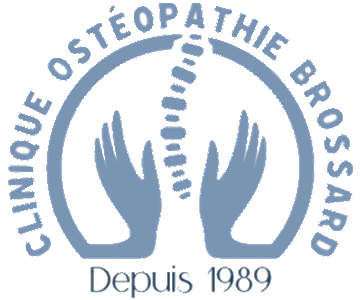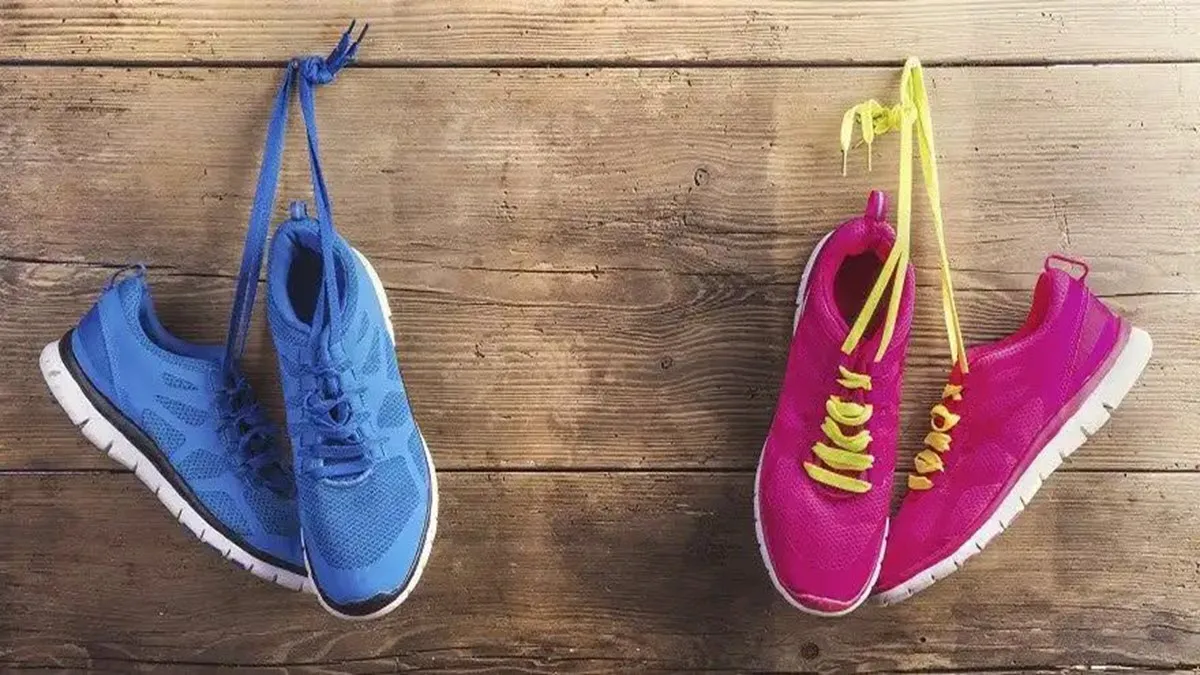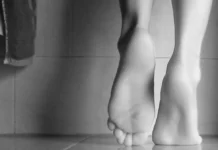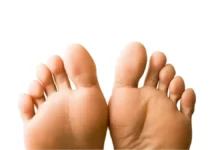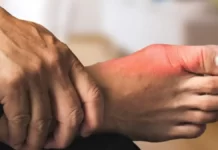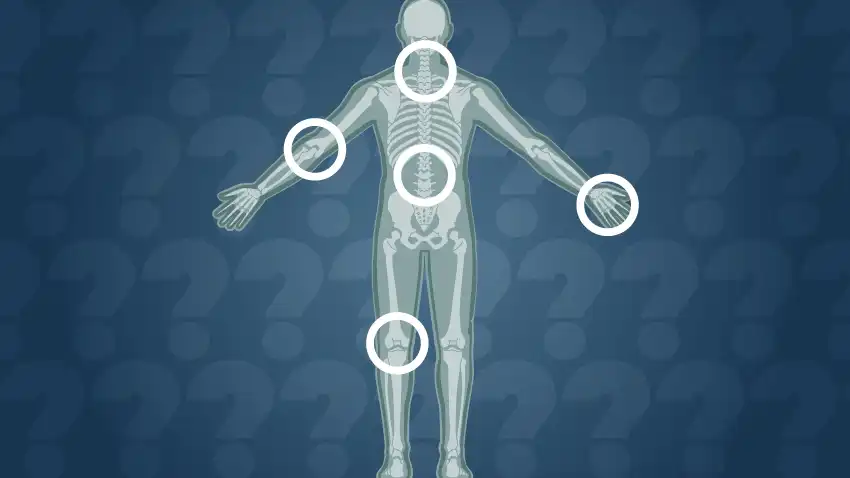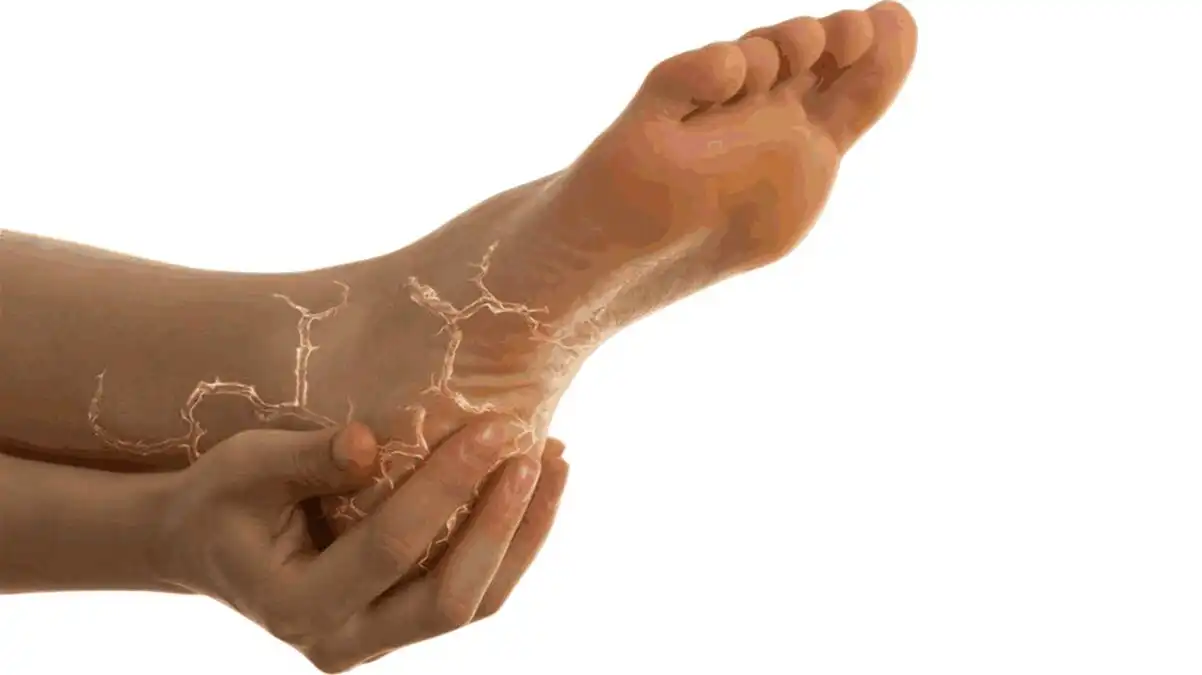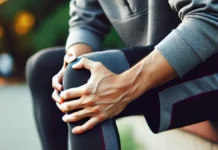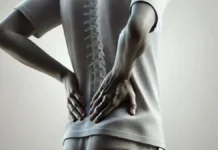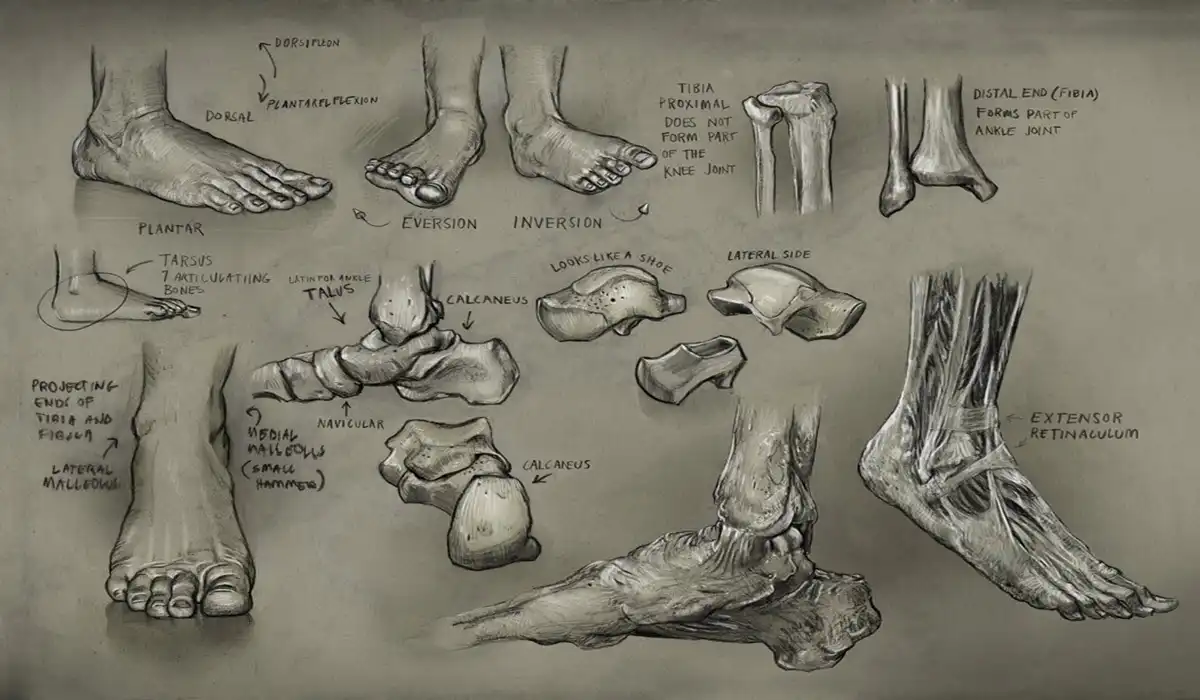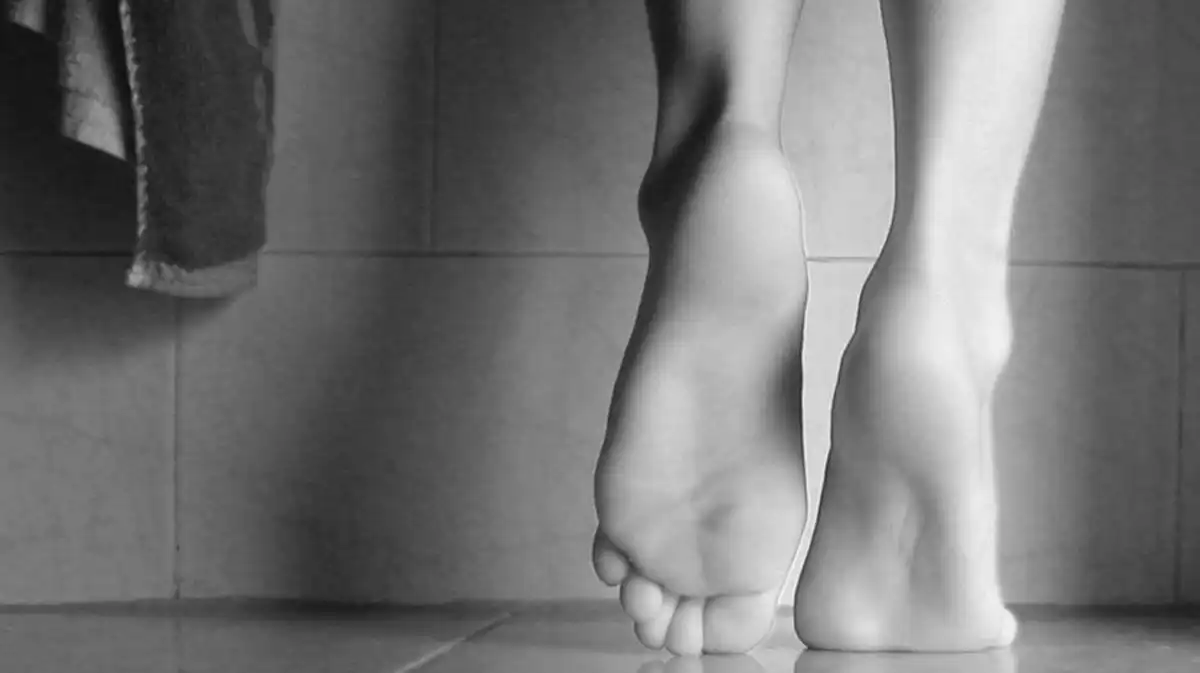By closely examining the wear and tear on your walking shoes over time, including any holes, small tears, and smoothed-out soles, you can gain valuable insights into your walking style, or gait. Observing the specific areas of wear on your shoes allows you to delve into the mechanics and form of your walking pattern.
Introduction
Understanding the wear profile of the sole of shoes is of crucial importance to prolong their durability and ensure optimal comfort. Carefully examining wear and tear can provide valuable insight into an individual’s walking habits and stride characteristics.
When we look at the analysis of the pattern of wear, it becomes possible to detect imbalances in the distribution of body weight. This observation highlights possible postural or biomechanical problems that can have a significant impact on musculoskeletal health. The most stressed areas of the sole, such as the heel, midsection and toe, are particularly revealing. By carefully observing these areas, it is possible to adjust the shoes to provide increased support where needed.
This in-depth understanding of the wear profile goes beyond simple shoe aesthetics. It becomes a diagnostic tool for health professionals, including podiatrists and osteopaths, who can interpret these signals to assess the patient’s biomechanics. By identifying areas of abnormal wear, these experts can recommend postural adjustments, specific exercises or even custom orthotics to correct underlying imbalances.
Additionally, understanding the wear pattern can help prevent injuries. By identifying areas of excess pressure, it becomes possible to anticipate and treat potential problems before they become chronic. Adapting the type of shoes according to specific needs, whether for a particular sporting activity or for everyday use, allows you to optimize comfort and improve athletic performance.
In a sporting environment, this detailed knowledge of the wear profile is particularly relevant. Athletes can adjust their equipment to suit their unique way of using their feet, which can impact their performance and reduce the risk of repetitive motion injuries.
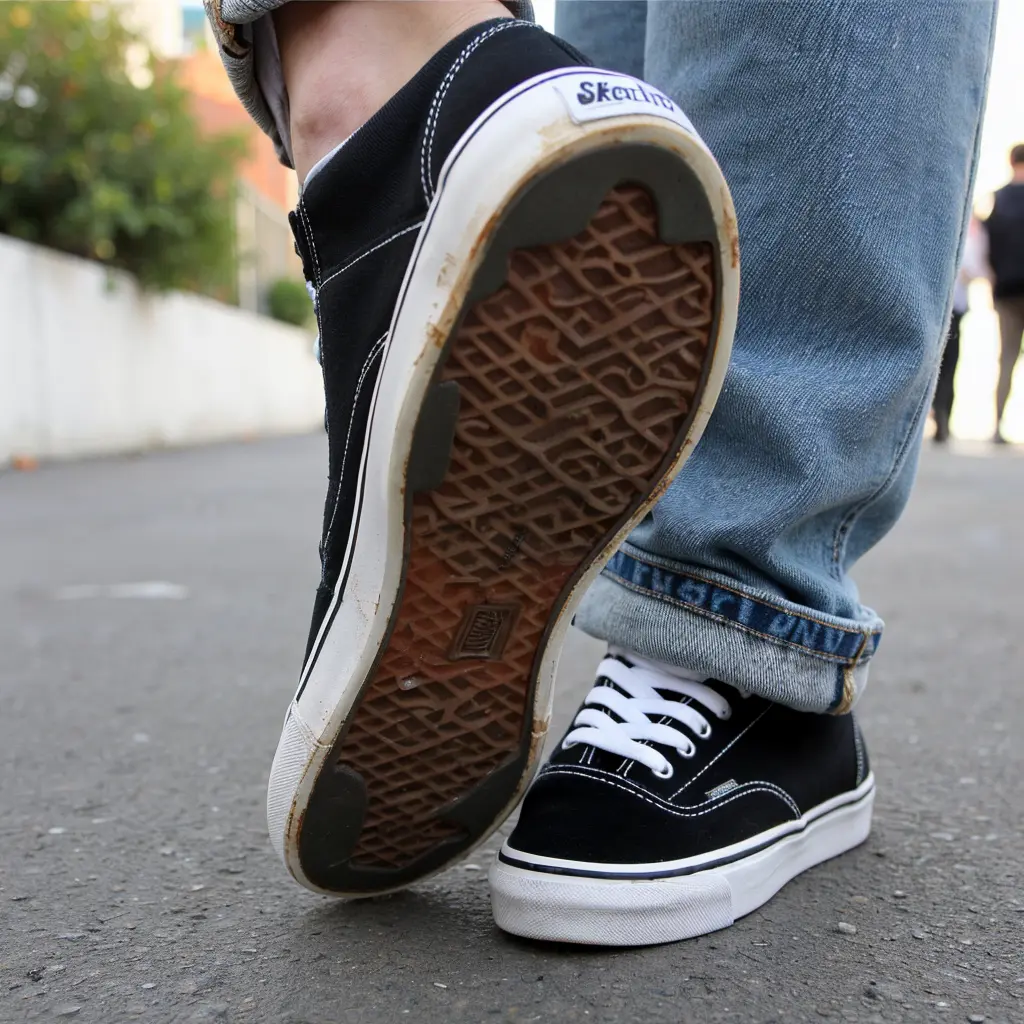
Types of Gait Patterns
Gait pattern types, also known as stride types, play a crucial role in understanding the biomechanics of walking. These models provide insight into the different movement patterns individuals adopt when walking or running. The two main types of gait patterns are the supinator gait and the pronator gait.
The supinator gait is characterized by an outward rotation of the foot during stride. People with a supinator gait often have a higher arch of the foot, which leads to uneven weight distribution on the outer side of the foot. This type of gait may be associated with increased impact on the foot and reduced shock absorption, which can increase the risk of injuries to the feet, ankles, and knees. It is essential for those with a supinative gait to choose shoes that provide additional support on the outer side of the sole to mitigate these impacts.
In contrast, the pronator gait is characterized by an inward rotation of the foot during the stride. People with a pronator gait often have a lower arch of the foot, which causes weight to be distributed toward the inner side of the foot. Excessive pronation can lead to instability while walking, increasing the risk of injuries to the feet, knees and hips. Choosing shoes with good arch support and increased stability can help correct the effects of excessive pronation.
It is important to note that each individual’s gait is unique, and most people exhibit a natural variation between supination and pronation while walking. Some gait patterns are neutral, meaning there is no excessive supination or excessive pronation. People with a neutral gait generally have more balanced shock absorption and weight distribution, reducing the risk of injury.
Medical professionals, such as podiatrists and running shoe specialists, can perform an in-depth gait analysis to determine the specific type of gait pattern an individual has. This information is valuable when choosing suitable shoes, as it helps minimize the risk of injuries related to the biomechanics of walking.
- Normal : Pronation is the normal movement of the foot when walking or running. The foot rolls inward minimally with each step.
- Hyperpronation or Excessive Pronation : In this case, the foot rolls inwards more significantly (low arch) with each step and continues this movement when the toes should start to push. Common in people with flat feet, overpronation creates a twisting motion in which the toes do most of the work, which can be associated with knee pain and shin splints.
- Supination or Underpronation : This gait causes the foot to roll outward with each step (high arch), which results in increased pressure on the outer edge of the foot and little toes. It is more common in individuals with a high, rigid arch and may be associated with iliotibial band (IT) syndrome and stress fractures.
Sole wear
The internal wear of a shoe’s sole is not simply an aesthetic sign of daily use, but rather a window into the individual biomechanics of walking. Understanding how your foot interacts with the ground can provide valuable insight into your gait and weight distribution while walking. This information can be crucial in choosing shoes for your specific needs and in taking proactive steps towards a more balanced approach.
By carefully examining the wear on the insole of your shoes, you can identify telltale patterns. Excessive wear on the inner side of the sole suggests excessive pronation, where the foot rolls inward while walking. This condition may result from unique foot biomechanics, and it may be associated with increased risks of pain and injury, particularly in the feet, knees and hips. For those with excessive pronation, choosing shoes with good arch support and increased stability can help correct these imbalances.
Conversely, more wear on the outer side of the sole may indicate supination, where the foot rolls outward. Excessive supination can also contribute to musculoskeletal problems and increase the risk of injury. In this case, shoes with additional support on the outer side of the sole can be beneficial to reduce the impact on the joints.
A balanced gait, often combined with even wear of the sole, is ideal. However, most people have a natural variation between pronation and supination. Understanding your own gait pattern can guide you toward shoe choices that are better suited to your anatomy.
Analyzing sole wear is not limited to finding suitable shoes. It can also serve as a tool for tracking your musculoskeletal health over time. Changes in wear pattern may indicate adjustments in your gait, and this may be related to factors such as postural issues, weight changes, or underlying medical conditions.
- Interior Heel Wear:
- If the inside heel portion of the sole is more worn, this may indicate excessive pronation, where the foot rolls inward while walking. You may need shoes that provide additional arch support.
- Even Wear across the entire Sole:
- Even wear across the entire insole may suggest a neutral gait. This is generally considered a balanced gait, and you can opt for stability or light support shoes.
- Wear on the Outer Edge of the Sole:
- Increased wear on the outer edge of the sole may indicate supination, where the foot rolls outward. In this case, shoes with good lateral cushioning can be beneficial.
- Wear at the Center of the Sole:
- If the wear is centered, it may indicate that you are applying more direct pressure to the center of the shoe while walking. Shoes with good cushioning and general support may be appropriate.
- Visual Inspection of the Insole:
- Visually examine the insole for signs of uneven wear. More damaged areas may indicate specific pressure points and require special attention.
- Consult a Professional:
- If you have concerns about wear and tear on the insole of your shoes, consult a healthcare professional, such as a podiatrist. They can perform a gait analysis and recommend suitable shoes or orthotics.
- Replacement of Insoles:
- If the wear is significant, consider replacing the insoles of your shoes. Orthotic insoles or inserts can provide additional support and help correct specific gait problems.
- Choosing Appropriate Footwear:
- When you buy new shoes, let the seller know how worn your current shoes are. This can help them guide you towards models suited to your approach.
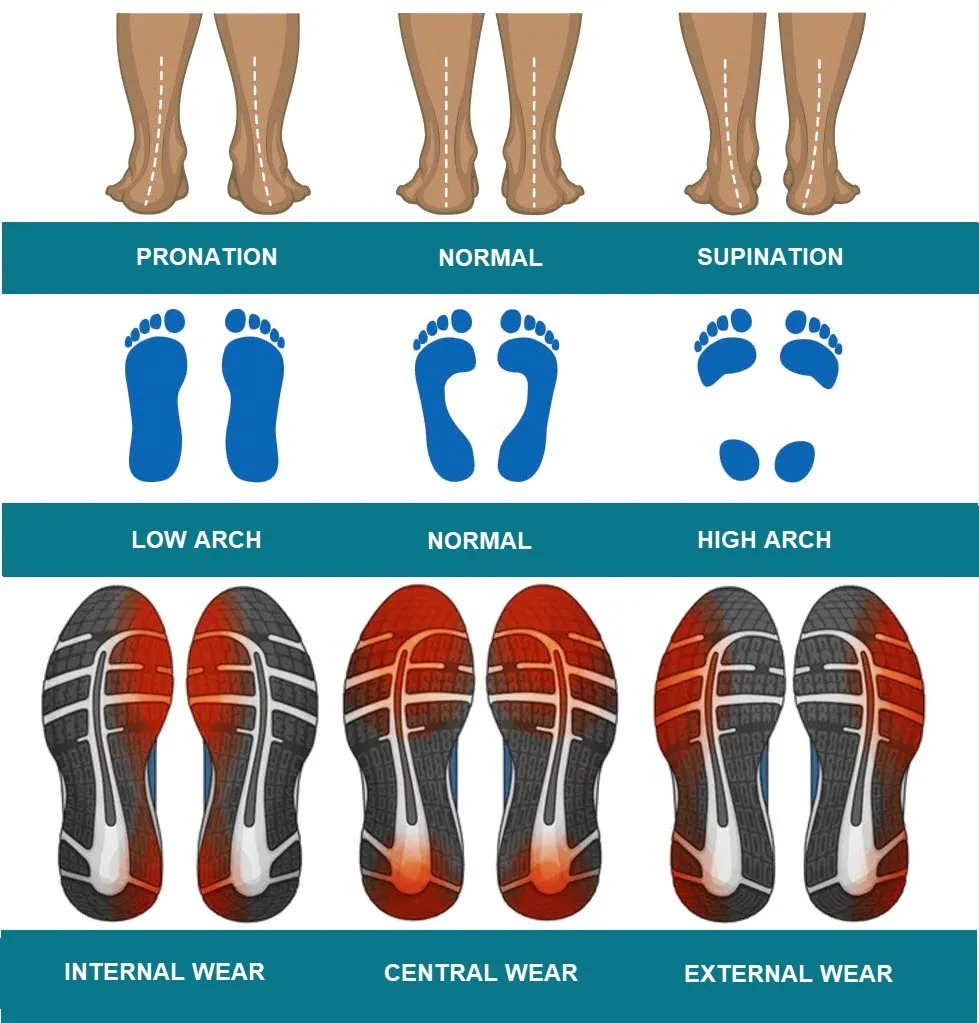
Internal Wear
(Hyperpronation)
Shows signs of wear, especially along the inside edge of the shoe, near the big toe and medial heel.
Central wear
(Pronation)
Shows wear under big toe. Neutral foot gait naturally rests on the first toe, without excessive rotation during the stride.
External wear
(Supination)
Shows signs of wear, especially along the outer edge of the shoe, near the little toe and lateral heel.
Correct walking techniques
Correct walking techniques are essential to prevent premature wear of soles and prevent injuries. Walking is a daily activity that we often do without thinking, but adopting good walking practices can make a big difference in our long-term musculoskeletal health. Here is some information on good walking practices that can help you preserve the durability of your soles and avoid injuries.
First, make sure you walk with correct posture. Keep your head up, shoulders relaxed, and back straight as you walk. Avoid leaning forward or slouching, as this can put excess pressure on your spine and joints, which can lead to pain and muscle tension. By maintaining a straight, aligned posture, you allow your body to function efficiently and distribute weight evenly across your feet.
Next, focus on your stride and gait. Try to walk smoothly and naturally, rolling gently from heel to toe with each step. Avoid taking steps that are too long or too short, as this can lead to imbalance and overuse of certain joints. Additionally, be sure to strike the ground with the middle or front of your foot rather than the heel, which can reduce impact on your joints and prevent injuries such as plantar fasciitis and knee pain. .
Another good walking practice is to keep a steady, consistent pace. Try to walk at a comfortable, steady pace, keeping the movement steady and fluid. Avoid walking too quickly or too slowly, as this can cause excessive fatigue and increase the risk of injury. If necessary, use a metronome or upbeat music to help you maintain a steady, consistent pace as you walk.
Additionally, make sure you wear appropriate shoes for walking. Choose shoes that provide good arch support, adequate cushioning and a comfortable fit. Avoid worn or ill-fitting shoes, as they can lead to foot and posture problems. If you walk frequently or for long distances, consider investing in specially designed walking shoes that provide extra support and impact protection.
Finally, remember to practice good breathing technique while you walk. Breathe deeply and evenly, filling your lungs with air with each inhale and exhaling completely with each exhale. Effective breathing can help oxygenate your muscles and reduce fatigue while walking. Additionally, mindful breathing can help you stay focused and relaxed while you walk, which can improve your posture and gait.
Walking is an essential daily activity for most people, but it is often overlooked that correct walking techniques can help reduce premature wear of soles and prevent injuries. Here are some good walking practices to keep in mind:
- Correct posture: Maintaining good posture is essential for efficient and safe walking. Keep your head straight, shoulders relaxed and back straight. Avoid leaning forward or backward.
- Foot Roll: When walking, try to roll your foot smoothly, starting at the heel and then rolling the foot down to the toes. Avoid striking the ground with your heel too aggressively, which can cause excessive wear on the soles.
- Stride Length: Try to maintain a comfortable, natural stride length. Steps that are too long or too short can cause excessive strain on joints and muscles, which can increase the risk of injury.
- Hip and knee alignment: Make sure your hips and knees are aligned while walking. Avoid turning your feet inward or outward excessively, which can lead to tension and imbalance.
- Moving Arms: Use your arms to help you maintain balance and propel your body forward. Let your arms swing naturally at your sides, keeping your elbows slightly bent.
- Breathing: Breathe regularly and deeply while walking. Mindful breathing can help oxygenate muscles and reduce tension in the body.
- Walking surfaces: Choose suitable walking surfaces and avoid uneven or slippery surfaces that could increase the risk of falling or injury.
- Appropriate footwear: Wear comfortable, well-fitting walking shoes that provide good support and cushioning. Replace your shoes when the soles show signs of excessive wear to avoid imbalances and injuries.
- Walking frequency: Try to walk regularly to maintain muscle strength and joint flexibility. Regular practice can also help improve cardiovascular endurance and support overall health.
- Warm-up and stretching: Before starting an intensive or prolonged walk, take the time to warm up by performing gentle stretches to prepare your muscles and joints. This can help reduce the risk of injury and improve flexibility.
- Walking cadence: Try to adopt a comfortable and regular walking cadence. A faster cadence may be more effective for cardiovascular health, while a slower cadence may be more appropriate for rest and relaxation.
- Hydration and nutrition: Make sure you stay hydrated before, during and after walking, especially in hot weather. Additionally, eat nutritious foods rich in carbohydrates, protein, and healthy fats to support your energy levels and promote muscle recovery.
- Variety in walking: Explore different walking surfaces and environments to stimulate your muscles and maintain your interest. Walking outdoors in nature can also provide additional mental and emotional health benefits.
- Listening to the body: Pay attention to your body’s signals while walking. If you experience persistent pain or unusual discomfort, slow down or stop to rest. Do not force movements that could aggravate an existing injury.
- Gradual progression: If you start a new walking routine or increase the intensity of your practice, do so gradually to allow your body to adapt and gradually strengthen.
Importance of shoe rotation
Shoe rotation is an often underestimated but essential principle to ensure not only the comfort and health of our feet, but also the durability of our shoes. It is recommended not to wear the same shoes every day for several reasons. First of all, each pair of shoes puts specific pressure on certain parts of our feet and joints. By wearing the same pair of shoes day after day, these pressure points can become excessive, which can lead to pain, calluses, and even injury. By alternating between different pairs of shoes, we allow our feet to adapt to different surfaces and different levels of support, reducing the risk of overusing certain areas and overloading certain joints.
Additionally, rotating the shoes allows each pair to dry completely between uses, helping to prevent moisture buildup and the growth of bacteria and fungus. Moisture accumulated inside shoes can not only cause unpleasant odors, but also encourage the development of fungal infections, such as athlete’s foot. By alternating between multiple pairs of shoes, we allow each pair to breathe and dry completely, which maintains a healthier environment for our feet and extends the life of our shoes.
Additionally, rotating shoes regularly can help extend their overall durability. When we wear the same pair of shoes day after day, they experience constant wear and tear, which can cause materials to break down more quickly and provide less support and cushioning. By alternating between multiple pairs of shoes, we distribute wear across multiple surfaces, reducing the stress placed on each individual pair. Additionally, by allowing each pair of shoes to rest between uses, we allow materials to recover and regenerate, which can extend their overall lifespan.
It’s important to note that shoe rotation doesn’t necessarily mean we have to have a collection of expensive shoes. Even by rotating between a few pairs of shoes of reasonable quality, we can reap the benefits of rotation while preserving our budget. The key is to vary styles and levels of support to give our feet a variety of experiences and maintain long-term health and comfort.
Sole technology
Shoe insole technology has evolved significantly in recent years, offering significant advancements in insole design and manufacturing that can significantly improve user comfort and performance. These technological advancements go far beyond simply providing extra cushioning for the feet; they aim to optimize the fit, support and functionality of shoes to meet specific user needs. One of the most notable advancements is the introduction of custom insoles, which are tailor-made to perfectly fit each foot’s individual shape and biomechanics. These insoles are often manufactured using advanced 3D scanning and modeling technologies, allowing for maximum precision and customization. By perfectly conforming to the shape of the foot, custom insoles provide optimal arch support, proper joint alignment and even weight distribution, which can reduce pain and discomfort associated with walking and walking. the race. Additionally, custom insoles can also improve stability and balance, which can reduce the risk of injury and increase users’ confidence in their movements.
Besides custom soles, other technological advancements in sole design include the use of innovative materials and advanced construction techniques. For example, some insoles have built-in air or gel cushions to provide additional cushioning and absorb shock when walking or running. Others use memory materials that conform to the contours of the foot for a more personalized fit and reduced pressure points. Additionally, many insoles are now designed with a combination of lightweight and breathable materials to ensure optimal comfort and good air circulation inside the shoe.
These technological advances in sole design are not limited to athletic shoes; they are also increasingly being incorporated into everyday shoes, including street shoes, work shoes, and even dress shoes. This allows users to benefit from the benefits of these cutting-edge technologies in all their daily activities, regardless of their physical activity level. In conclusion, shoe insole technology has seen significant advancements in recent years, offering innovative solutions to improve user comfort, support and performance. From custom insoles to memory materials to integrated air cushions, these technological advancements offer a multitude of options to meet users’ specific needs and optimize their walking, running and daily living experience. By investing in shoes with these advanced technologies, users can not only improve their comfort and well-being, but also maximize their performance and reduce the risk of long-term injuries.
List of the main advances in this area:
- Cushioning and shock absorption: Modern insoles often incorporate advanced cushioning materials such as gel, air, or memory foam. These materials absorb shock when walking or running, reducing pressure on the feet, ankles, knees and joints, improving comfort and reducing the risk of injury.
- Arch Support: Insoles with arch support provide additional support to the arch of the foot, helping to prevent pain and injuries related to overpronation or overpronation. These insoles also help maintain good body posture by evenly distributing body weight across the feet.
- Pronation Control: Orthopedic or correctional insoles are designed to correct problems with excessive pronation or supination, which can lead to pain and injury. These insoles are typically customized to the wearer’s individual body shape and needs, providing tailored support for more comfortable and efficient walking or running.
- Breathability and moisture management: Modern insoles often incorporate breathable materials and moisture management technologies to wick away sweat and keep feet cool and dry. This helps prevent fungal infections and unpleasant odors, while providing increased comfort during physical activities.
- Lightweight and durable: The materials used in shoe soles have become increasingly lightweight and durable, reducing the overall weight of the shoe while providing increased durability. This allows wearers to experience increased comfort and better performance without compromising the longevity of the shoes.
- Grip and Traction: Shoe outsoles often incorporate traction patterns and non-slip materials to provide better grip on a variety of surfaces. This reduces the risk of slips and falls, especially in wet weather or on uneven terrain.
- Adaptability and customization: Some manufacturers now offer custom or adaptable shoe insoles, designed to perfectly fit the shape and individual needs of each person’s feet. These insoles can be custom made using technologies such as 3D printing or impression molding, providing a precise fit and maximum comfort.
- Responsiveness and energy return: Some insoles incorporate innovative materials designed to provide increased responsiveness and energy return while walking or running. These materials, such as high-elastic foams or thermoplastic polymers, help propel the foot forward, improving gait efficiency and overall performance.
- Activity and performance monitoring: With the advent of wearable technology, some shoe insoles incorporate sensors and monitoring devices to track physical activity, gait performance and other health and fitness metrics. fitness. These connected insoles can provide valuable data to users and healthcare professionals to optimize training, prevent injuries and monitor the progress of fitness goals.
- Protection from the Elements: Modern shoe soles can be treated with water-repellent, antimicrobial, or reflective coatings to provide additional protection against weather, bacteria, and reduced visibility in low-light conditions. This allows wearers to remain comfortable, safe and healthy, regardless of weather or environmental conditions.
- Ecology and sustainability: More and more manufacturers are adopting sustainable practices in the design and production of their shoe soles, using recycled materials, environmentally friendly manufacturing processes and waste reduction initiatives. This helps minimize the environmental impact of the footwear industry while providing high-quality, planet-friendly products.
- Vibration and shock reduction: Some manufacturers incorporate vibration and shock reduction technologies into the soles of their shoes. This may include the use of special materials or innovative structures to absorb and dissipate shock, reducing muscle fatigue and the risk of injury during high-impact activities such as running.
- Stabilization and Motion Control: Modern shoe insoles may be equipped with stabilization and motion control systems to help maintain foot stability and balance during walking, running, or other activities. These systems may include lateral reinforcements, torsion bars or pronation control technologies to prevent excessive movement and reduce the risk of injury.
- Customization of cushioning: Some manufacturers offer shoe insoles with customizable cushioning systems, allowing users to adjust the firmness or softness of the cushioning based on their personal preferences or specific needs. This provides a more individualized and comfortable walking or running experience.
- Connectivity Integration: Some shoe insoles are designed to be compatible with mobile apps or wearable devices, allowing users to monitor and analyze their physical activity, gait and other health metrics in real time. This integration of connectivity allows users to better understand their body and their performance, while making it easier to track and manage their fitness goals.
- Adaptability to environmental conditions: Some materials used in shoe soles are specially designed to adapt to varying environmental conditions, providing optimal grip on dry, wet or slippery surfaces. This may include the use of water-repellent rubber, multi-directional lugs or specific traction patterns for maximum performance in all conditions.
Impact of the environment on sole wear
The impact of the environment on shoe sole wear is an often overlooked but crucial factor to consider to prolong the durability and performance of shoes. The environment we walk in can vary greatly in terms of surface, weather conditions and potential obstacles, and each of these can have an effect on sole wear. For example, walking on abrasive surfaces such as concrete or pavement can accelerate wear on the soles, especially around the heel and outsole. Likewise, weather conditions such as rain, snow or ice can also increase wear on the soles due to exposure to moisture and de-icing chemicals. Obstacles such as stones, branches or debris can also damage the soles and reduce their durability if not properly protected. To minimize the impact of the environment on sole wear, it is recommended to choose shoes adapted to the activity and the conditions in which they will be worn. For example, for outdoor walking on rough surfaces, it is best to choose shoes with abrasion-resistant soles and sturdy construction for maximum protection. Likewise, for running or hiking in harsh weather conditions, it is recommended to choose waterproof shoes with increased grip for optimal traction on wet or slippery surfaces. In addition, it is important to regularly maintain the soles by cleaning and treating the shoes with appropriate care products to extend their lifespan and maintain their performance. By following these simple tips, individuals can minimize the environment’s impact on sole wear and prolong the durability of their shoes for long-term use.
Here’s how different environmental factors can influence sole wear and how to choose suitable shoes:
- Rough or abrasive terrain: Walking on rough surfaces, such as gravel, raw concrete, or uneven hiking trails, can cause the soles to wear out quickly. Abrasive particles and rough terrain can erode the rubber of the sole and compromise its durability. For these types of terrain, choose shoes with sturdy, abrasion-resistant soles with deep traction patterns for optimal grip.
- Wet or muddy conditions: Walking on wet, muddy or slippery surfaces can accelerate wear on the soles and compromise traction. Water and mud can infiltrate the grooves of the sole, weakening its structure and reducing its effectiveness. Opt for shoes with water-repellent rubber soles and multi-directional traction patterns for optimal grip on wet surfaces.
- Urban Paving: Walking on concrete sidewalks or paving stones can also cause excessive wear on the soles, especially at the heel and toe area. Hard, even surfaces can cause constant friction between the sole and the ground, leading to premature deterioration of the material. Choose shoes with abrasion-resistant rubber soles and extra cushioning in the heel to absorb shock.
- Extreme Weather Conditions: Extreme weather conditions, such as intense heat, extreme cold, or snowstorms, can also affect sole wear. Extreme temperatures can cause changes in the structure of the sole material, making it more vulnerable to wear and tear. Look for shoes designed to withstand extreme weather conditions, with durable soles and weather-resistant materials.
- Sun Exposure: Prolonged exposure to the sun can also affect the durability of soles, especially for rubber or foam shoes. UV rays can cause degradation of the sole material, leading to loss of grip and premature wear. To minimize the sun’s impact, store your shoes in a cool, dry place when not in use, and choose shoes with UV-resistant soles.
- Exposure to salt water: Walking on surfaces covered in salt water, such as beaches or seaside sidewalks, can accelerate the corrosion of rubber soles. Salt in seawater can damage the sole material, leading to premature wear and loss of grip. To minimize damage, rinse your shoes in fresh water after exposure to salt water and choose shoes with corrosion-resistant soles.
- Specific activities: Certain activities, such as mountain hiking, trail running or prolonged walking, may cause greater wear and tear on the soles due to the specific demands of the terrain and intensity of the activity. For these activities, choose shoes designed specifically to meet the needs of your activity, with sturdy soles, optimal grip and extra cushioning to protect your feet from shock and stress.
- Frequency of use: How often you use your shoes can also affect the wear of the soles. Daily or heavy use may cause the sole material to deteriorate more quickly, especially if you walk on abrasive or difficult surfaces. To minimize wear and tear, alternate between several pairs of shoes and replace them regularly when you notice signs of excessive wear.
How to buy your shoes
Buying ergonomic shoes is a wise decision that can bring significant benefits to your daily comfort and the health of your feet. Ergonomic shoes are designed to provide optimal support for the structure of the foot, promote a natural gait, and reduce pressure on the joints. Here is a guide to help you choose and buy ergonomic shoes, in order to optimize your foot well-being.
First of all, it is essential to know the shape of your feet. Each individual has a unique body shape, and some may have a high arch, while others have a lower arch. An accurate assessment of your foot type can be performed by footwear professionals, such as podiatrists, to determine the level of support needed.
The insole plays a crucial role in the comfort of the shoes. Opt for shoes with removable and replaceable insoles. This will allow you to adapt them to your specific needs, possibly adding orthopedic insoles recommended by a healthcare professional if necessary.
When purchasing ergonomic shoes, focus on the quality of the materials. Breathable materials, such as leather, help regulate temperature and prevent moisture build-up, preventing foot problems such as fungus or blisters. Also make sure that the shoes offer good flexibility in the front of the foot, thus promoting a natural gait.
Arch support is an essential feature of ergonomic shoes. A good pair of shoes should provide adequate arch support to reduce strain on the feet and joints. Check that the shoe provides good cushioning, especially in the heel area, to absorb shock while walking.
Also consider the shape of the toe of the shoe. Opt for shoes that allow your toes to move naturally without being compressed. This helps prevent problems such as bunions and corns.
Trying on shoes is a crucial step. Be sure to try them on at the end of the day when your feet are slightly swollen, which is more representative of their actual size. Walk around the store a bit to assess comfort and stability.
Researching reputable brands specializing in ergonomic shoes can also help guide your choices. These brands often focus on research and development to create shoes that combine style and functionality.
- Determine Your Needs:
- Identify the main reason why you are looking for ergonomic shoes. Do you need support for specific issues such as arch, heel pain, or posture-related issues?
- Do an Analysis of Your Foot:
- Know the shape of your feet (flat, normal arch, or pes cavus) and whether you have any special characteristics, such as pronating or supinating feet. Some ergonomic shoes are designed to meet these specific needs.
- Consult a Health Professional:
- If you have foot or posture problems, consult a podiatrist or orthopedist. They can recommend ergonomic shoes suited to your situation.
- Establish a Budget:
- Set a budget before you start shopping. Ergonomic shoes can vary greatly in price, but investing in quality can be worth it for your comfort and well-being.
- Familiarize yourself with the Reputable Brands:
- Research brands that are known for their ergonomic shoes. Brands specializing in the design of comfort shoes can offer better quality.
- Consider Material and Design:
- Opt for shoes made from breathable and flexible materials to allow for a good fit and ventilation. The sole should provide good support and be non-slip.
- Ensure a Good Fit:
- Always try shoes on before buying them. Make sure they are both comfortable and fit well. Your toes should not be compressed, and your feet should have enough room to move.
- Check Additional Features:
- Some ergonomic shoes come with additional features, such as removable insoles, extra arch support, or specific features for activities like running or walking.
- Read Online Reviews:
- Before you buy, check online reviews for the specific brand or model you’re considering. This can give you insight into customer satisfaction and shoe performance.
- Return policy :
- Make sure you know the store’s return policy. This gives you peace of mind in case the shoes don’t meet your expectations once you wear them.
Shoe size assessment
Assessing shoe size is an essential aspect of shoe shopping to ensure a comfortable fit and avoid common problems such as blisters and foot pain. Choosing the right shoe size may seem simple, but it can often be more complicated than it seems. Here are some tips to help you correctly assess your shoe size and find the perfect pair for your feet.
First, measure your feet regularly. The size and shape of feet can change over time due to factors such as growth, pregnancy or weight loss. Therefore, it is important to measure your feet regularly to ensure that you are purchasing shoes in the correct size. Use a foot measuring device or consult a professional to get accurate measurements of the length and width of your feet.
Next, consider the shape of your feet. Some individuals have wide, narrow, flat or arched feet, which can influence the choice of shoe size and style. If you have wide feet, look for brands that offer extra width options or opt for shoes with a wider fit to avoid pressure points and pain. Likewise, if you have narrow feet, look for shoes that offer a tighter fit to prevent excessive slipping and rubbing.
When trying on shoes, be sure to leave about half an inch of space between the longest toe and the end of the shoe. This will allow your feet to move comfortably inside the shoe and prevent excessive friction that can cause blisters and irritation. Additionally, make sure the width of the shoe matches the width of your feet for the best fit. If the shoe is too narrow, it can compress your toes and cause pain and irritation, while a shoe that is too wide can cause excessive slippage and lack of support.
Don’t forget to consider the shape of the shoe. Some shoe brands and models are designed to fit specific foot types, while others are more universal in their design. If you have flat feet, look for shoes with good arch support to avoid pain and excess strain. If you have arched feet, opt for shoes with extra support in the arch to help reduce fatigue and soreness.
Finally, always try on both shoes and walk around the store to make sure they are comfortable and supportive. If you experience pressure points or pain, try a different size or style of shoe to find what works best for you. Remember that comfort is key when choosing shoes, so don’t compromise comfort for style or appearance.
Rehabilitation and gait exercises
Rehabilitation and gait exercises are essential aspects to correct gait imbalances and prevent musculoskeletal injuries. Incorrect gait can result from a variety of factors, such as muscular imbalances, poor posture, previous injuries, or underlying biomechanical issues. Fortunately, there are many rehabilitation techniques and specific exercises that can help correct these problems and improve gait functionality.
First, it is important to identify the specific imbalances and weaknesses that contribute to the incorrect gait. This can be done through a thorough gait assessment by a qualified healthcare professional, such as an osteopath. Once imbalances are identified, a personalized rehabilitation plan can be developed to target these specific issues.
Muscle strengthening exercises are often a key part of gait rehabilitation. This may include strengthening the muscles in your legs, hips, glutes, and core to improve stability, balance, and coordination while walking. Exercises such as squats, lunges, lateral leg raises, and hip bridges can help strengthen these muscle groups and correct imbalances that contribute to incorrect gait.
In addition to muscle strengthening, stretching exercises are also important for improving flexibility and joint mobility. Tight or stiff muscles can limit range of motion while walking and contribute to an irregular gait. Targeted stretching exercises can help loosen these muscles and restore normal range of motion. Stretches such as calf stretches, quadriceps stretches, hamstring stretches, and hip flexor stretches can be beneficial for improving lower extremity flexibility and reducing muscle tension while walking.
Additionally, gait rehabilitation may include proprioception and balance exercises to improve body awareness and coordination. Exercises such as walking in a straight line, walking on unstable surfaces, or using a bosu or swiss ball can help strengthen stabilizer muscles and improve dynamic balance while walking. Regularly practicing these exercises can help individuals develop a more stable and symmetrical gait, reducing the risk of falls and injuries.
Finally, gait rehabilitation may also involve adjustments to the ergonomics and biomechanics of gait. This may include advice on proper posture and walking technique, as well as the use of foot orthotics or special shoes to correct underlying biomechanical issues. Minor adjustments to walking technique, such as changing stride length or foot angle, may also be beneficial in improving walking efficiency and comfort.
Here is some information on rehabilitation exercises and techniques that may be helpful:
- Muscle Strengthening: Strengthening the muscles of the legs, hips and core is essential for a balanced gait. Exercises such as squats, lunges, lateral leg raises, and planks can help strengthen stabilizer muscles and improve gait stability.
- Stretching: Stretching can help improve the flexibility of muscles and joints, which can contribute to a smoother gait and reduce the risk of injury. Focus on stretching your calf muscles, quadriceps, hamstrings, and hip flexors.
- Balance and proprioception: Balance and proprioception exercises can help improve stability and gait control. Try doing single-leg exercises, like unilateral squats or hip extensions, as well as exercises with an unstable surface, like exercises on a balance ball or air cushion.
- Walking technique: Working on walking technique can help correct imbalances and improve gait efficiency. Focus on points like body alignment, stride length, foot roll, and use of the arms for a more fluid, natural gait.
- Correcting muscle imbalances: Identify and correct muscle imbalances that may contribute to abnormal gait. Targeted strengthening exercises and stretching can help restore balance between agonist and antagonist muscles, as well as between muscles on the right and left sides of the body.
- Professional consultation: If serious or persistent gait imbalances occur, it may be necessary to consult a qualified healthcare professional, such as an osteopath. These professionals can evaluate your gait, identify underlying issues, and design a personalized rehabilitation program to correct imbalances and prevent injuries.
Integrating Osteopathy with Gait Analysis: Addressing Shoe Wear Patterns for Holistic Health”
The analysis of shoe wear patterns provides a unique window into understanding an individual’s gait and potential musculoskeletal imbalances. As an osteopath, you can leverage this information to offer a more personalized and effective treatment plan. By examining the wear on a patient’s shoes, you can identify areas of excessive pressure or uneven weight distribution, which often point to underlying biomechanical issues.
Osteopathic Manipulative Treatment (OMT) can play a crucial role in addressing these imbalances. For instance, if a patient exhibits excessive wear on the inner edge of the sole, indicating hyperpronation, OMT can help realign the foot and ankle structures, thereby reducing the inward rolling motion that contributes to this pattern. Through targeted adjustments, stretching, and strengthening exercises, you can correct the body’s alignment, promote a more balanced gait, and ultimately prevent further wear and tear on the shoes.
Furthermore, OMT can enhance the overall function of the musculoskeletal system by improving joint mobility, relieving muscle tension, and optimizing the body’s natural healing processes. This holistic approach not only addresses the symptoms observed through shoe wear patterns but also tackles the root causes of gait imbalances. By integrating osteopathy with gait analysis, you can offer patients a comprehensive treatment that supports long-term health and well-being, ensuring that their feet—and their entire body—move in harmony.
Conclusion
Understanding gait patterns is crucial for identifying and addressing biomechanical issues that can significantly impact musculoskeletal health. The way we walk, known as our gait pattern, provides deep insights into how our body distributes weight and absorbs impact with each step. This understanding is especially important because different gait patterns, such as supination (underpronation) and pronation (overpronation), can lead to various health issues if left unaddressed.
Types of Gait Patterns
The two primary gait patterns are supination and pronation. Supination occurs when the foot rolls outward during the stride, typically seen in individuals with higher arches. This outward roll can lead to uneven weight distribution across the foot, causing excessive pressure on the outer edge. The result is often reduced shock absorption, which can increase the risk of injuries to the feet, ankles, and knees. Individuals with a supinator gait may be more prone to conditions like iliotibial band (IT) syndrome, stress fractures, and other impact-related injuries. To mitigate these risks, it is crucial to choose shoes that offer additional support on the outer side of the sole, helping to balance the load across the foot.
In contrast, pronation involves the inward roll of the foot during a stride, commonly associated with a lower arch or flat feet. This inward roll causes the weight to shift toward the inner side of the foot, leading to potential instability during walking. Excessive pronation can result in overuse injuries, such as shin splints, plantar fasciitis, and knee pain, as it often forces the foot into an unnatural position, putting strain on various parts of the lower body. To counteract the effects of pronation, individuals should look for shoes with robust arch support and enhanced stability features, which can help distribute pressure more evenly and maintain proper alignment.
Importance of Recognizing Gait Patterns
Each person’s gait is unique, often a blend of supination and pronation. Some individuals have a neutral gait, characterized by balanced shock absorption and weight distribution, which generally reduces the risk of injury. Recognizing your specific gait pattern is essential for several reasons. First, it allows for the selection of appropriate footwear tailored to your biomechanical needs, which can prevent injuries and improve comfort during walking or running. For instance, those with a pronator gait may benefit from stability shoes with firm arch support, while supinators might require shoes with more cushioning and lateral support.
Moreover, analyzing gait patterns can be a valuable diagnostic tool for healthcare professionals, such as podiatrists, physical therapists, and osteopaths. By understanding an individual’s gait, these professionals can develop targeted interventions, including custom orthotics, specific exercises, and therapeutic techniques, to correct imbalances and promote better movement mechanics. For example, osteopathic manipulative treatment (OMT) can address underlying musculoskeletal issues contributing to abnormal gait patterns, enhancing overall body alignment and function.
References
- Neumann, D. A. (2016). Kinesiology of the Musculoskeletal System: Foundations for Rehabilitation (3rd ed.). Elsevier.
- This textbook covers the biomechanics of movement, including gait analysis and the musculoskeletal implications of various gait patterns.
- Perry, J., & Burnfield, J. M. (2010). Gait Analysis: Normal and Pathological Function (2nd ed.). Slack Incorporated.
- A comprehensive resource on gait analysis, including detailed descriptions of normal and pathological gait patterns.
- Magee, D. J. (2013). Orthopedic Physical Assessment (6th ed.). Elsevier.
- This book provides an in-depth examination of physical assessment techniques, including gait analysis, for identifying musculoskeletal issues.
- Riegger-Krugh, C. (1990). The Biomechanics of Gait: Implications for Orthotic Management. Clinics in Podiatric Medicine and Surgery, 7(3), 499-510.
- An article that discusses the biomechanics of gait and the role of orthotic devices in managing gait-related issues.
- Gait Analysis Laboratory, University of California, Davis.
- This resource offers information on gait analysis techniques and their application in clinical settings. Accessible at: UC Davis Gait Lab
- Whittle, M. W. (2007). Gait Analysis: An Introduction (4th ed.). Butterworth-Heinemann.
- An introductory text that explains the principles of gait analysis and its clinical applications.

